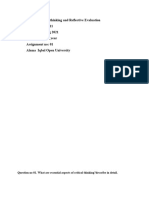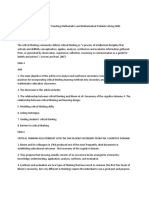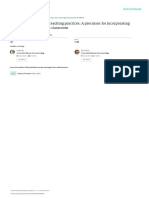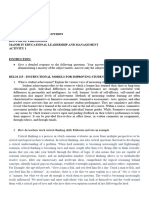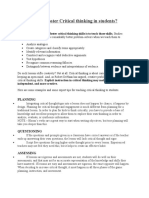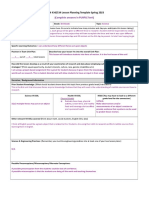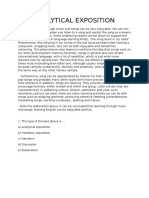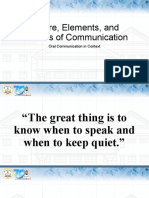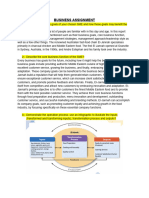Critical Thinking and Reflective Practices (EDU406)
Assignment 1 (Fall 2024)
Total Marks: 15
Topics: 25 - 60
Solution
Q. Describe FIVE techniques of critical thinking that you think are the best ideas. How do
these techniques contribute to enhancing your critical thinking skills? Justify your answer
with an example. (15 marks)
Five Techniques of Critical Thinking
1. Clarity:
Critical thinkers prioritize clarity in their thoughts, ensuring they express themselves in a
straightforward and understandable way. This involves asking for elaboration and seeking
examples to remove ambiguity. For instance, instead of vaguely questioning, 'How can we
improve education?', a clear approach would be, 'What steps can teachers take to better
prepare students for future challenges?' This technique ensures understanding and helps
avoid misunderstandings in discussions.
2. Accuracy:
Accuracy in critical thinking requires verifying information and ensuring statements are
true and based on evidence. Critical thinkers refrain from making assumptions without
evidence. For example, instead of saying, 'Most students don’t know how to study
effectively,' it’s more accurate to state, 'Many students may benefit from learning specific
study strategies.' This technique builds credibility and trust by basing conclusions on
accurate information.
3. Relevance:
Keeping discussions relevant to the topic is essential for productive critical thinking. This
technique focuses on staying on point and avoiding unrelated information. In classroom
settings, focusing on relevant details helps teachers deliver lessons aligned with the
learning objectives, improving students' understanding and retention.
�4. Identifying Assumptions:
Recognizing and questioning assumptions is a vital critical thinking technique. It helps
uncover potential biases in beliefs or statements, leading to a more balanced perspective.
For instance, the assumption that 'only certain students excel in science' can be questioned,
which allows educators to encourage all students to engage in scientific learning. Identifying
assumptions supports inclusivity and challenges stereotypes.
5. Empathy:
Empathy allows critical thinkers to consider others' perspectives, fostering a
comprehensive understanding of issues. By attempting to view situations from different
angles, thinkers can minimize personal biases. In education, empathy enables teachers to
better understand students' needs, thereby providing more personalized support. This
technique enhances collaboration and positive relationships.
How These Techniques Enhance Critical Thinking Skills
1. Clarity enhances critical thinking by ensuring that ideas are well-defined and easily
understandable. For example, clear instructions in a classroom help students engage better,
leading to improved learning outcomes.
2. Accuracy prevents the spread of misinformation and maintains the quality of discussions.
In academic research, verifying sources before using information builds a more credible
foundation for study.
3. Relevance keeps discussions productive and goal-oriented. In a classroom, this helps
teachers focus on essential learning objectives, thus improving lesson effectiveness.
4. Identifying Assumptions promotes an open-minded approach and reduces biases. For
instance, questioning assumptions about students’ abilities leads to more inclusive teaching
methods.
5. Empathy encourages collaboration and helps build stronger relationships. Understanding
students' perspectives enables teachers to provide tailored support, which boosts student
engagement and motivation.
These techniques collectively support informed decision-making, enhanced teaching
strategies, and an inclusive learning environment that values diverse perspectives.













